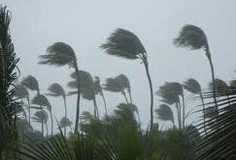
In the years since 9/11, those in disaster planning, preparation, education, response and recovery have concentrated all their effort on convincing private healthcare corporations and non-healthcare corporations alike to adopt an all hazards approach to adversity and disaster.
Perhaps because 9/11 and anthrax were the impetus for the funding of this push, corporate America has associated this large expense with what they believe to be an unlikely threat, terrorism. The 2004 – 2005 hurricane seasons gave the southeastern regions of the United States a clear focus for disaster preparedness in the forms of hurricanes Charlie, Francis, Ivan, Jeanne, Katrina, Rita and Wilma. Unfortunately with this focus came a tendency to prepare for hurricanes, certainly not an all hazards approach.
The simple fact missed by all but a very few in the disaster community and even fewer in the disaster planning, preparation, education, response and recovery industry is that the word “disaster” does not belong in the title. We are not a “disaster” community, nor are we in the “disaster” planning, preparation, education and recovery industry; rather we are the “All Hazards” planning, preparation, education and recovery community.
Before you assume this is simply a matter of semantics, think about what we seek to accomplish. Our “All Hazards” community does not just seek to prepare for the possible of a terrorist attack or a natural disaster, we seek to fundamentally change attitudes and behaviors so that when adversity strikes or disaster looms large on the horizon, our citizens, our communities and our infrastructure are prepared. Our true goal is to never again see a line at Home Depot or the grocery store the day before or the day after a disaster.
This is not a new concept. The practice of vulnerability analysis and risk assessment is well established in many safety sensitive industries and in the military. The Institutes of Medicine first applied this practice to the healthcare industry in the 1999 To Err Is Human report. Far from a treatise on disaster preparation, To Err is Human was the warning siren that brought the issues of patient safety and medication errors to the public forum.
Although voluminous, the main thrust of To Err is Human was to review the lack of reporting systems and fail safes in the healthcare system as a whole and to correlate the current state of safety in healthcare to that of other industries. To Err is Human goes to great lengths to detail “public-private” safety efforts, but overall the report proposes the groundwork and a justification for governmental intervention and federal regulation of healthcare safety and by implication, healthcare quality/certification.
If this sounds a lot like the trio of 2006 Institute of Medicine reports on the state of Emergency Medicine and disaster preparedness, it is very similar. The 2006 reports when combined with the 1999 To Err is Human report demonstrate the similarity between community wide disasters and patient centered disasters. A true “All Hazards” approach to preparedness thus should include patient safety, medication safety, fire safety and personal safety in addition to the current concentration on terrorism and disaster preparedness.
There are a number of advantages to this expanded “All Hazards” approach to safety, planning and preparedness. The greatest of these is the integration of patient safety initiatives and disaster preparedness training allowing healthcare professionals to practice disaster preparation skills as part of their daily routine. This has applications in team building, triage, safety reviews, command structures, patient throughput and literally every aspect of hospital operations.
The implications go far beyond the immediate process improvements that come from an “All Hazards” training program. The mind set that is instilled in those trained in an “All Hazards” approach to daily operations lends to innovations in operational processes and streamlining of previously entrenched systems.
“All Hazards” training also creates the “common safety investment” that the To Err is Human states is missing from healthcare, but common to such industries as air travel and railroads (pilots and engineers share the same “safety investment” as passengers). Those who have received “All Hazards” training come to understand and internalize that reality that any risk that exists for a patient exists for the healthcare professional as well.
Finally, recognizing patient safety issues and all the other safety issues in healthcare as hazards under an “All Hazards” approach will result in better success in achieving both sets of goals. Patient safety initiatives celebrate their seventh anniversary this year, but even the CEO of the Joint Commission for the Accreditation of Healthcare Organizations (JCAHO) admits that medication error and wrong site surgery have grown exponentially in that time. Despite a virtually limitless budget and the best efforts of the best minds in patient safety, healthcare has not gotten better, it has gotten more dangerous.
At the same time, the past five years has seen hospital and healthcare disaster preparedness change only marginally. The 2006 Institute of Medicine reports severely criticizes healthcare for failing to invest in “All Hazards” preparedness despite the fact that it has been proven effective not only in increasing security, but increasing surge capacity, safety and efficiency. For “All Hazards” preparedness, the problem is not having the budget to apply a proven and effective solution.
Dealing with patient risks, medication errors and surgical mishaps as another category of hazards under an all encompassing “All Hazards” approach promises to solve the problems for both programs. Patient safety will benefit from the proven efficacy of an “All Hazards” approach designed specifically to mitigate multifactorial risk while “All Hazards” training programs will finally have the budget priority and funding needed to ensure system wide implementation.
The only question remaining is whether those who have made their careers in patient safety as it has been practiced for the past seven years are prepared to adopt a broader view of the world and whether the “All Hazards” community is ready to be truly “All Hazards” in their approach.

Source by Maurice Ramirez
 Vitamin Agent The Health & Naturalistic Source
Vitamin Agent The Health & Naturalistic Source





